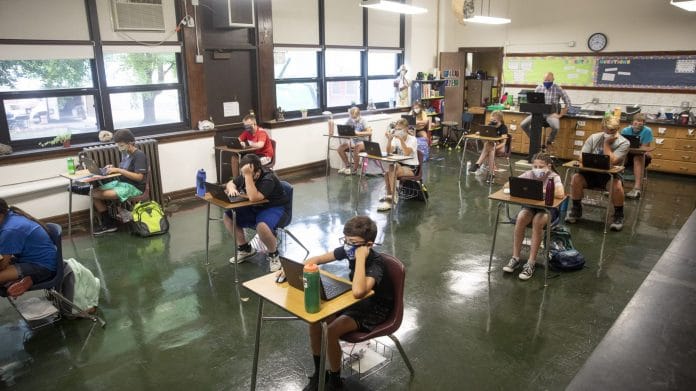Of the 50 million American children currently enrolled in public schools, most are restricted to their homes for at least part of the school day. Some parents have found an imperfect solution to their new reality: pandemic learning pods.
These set-ups allow groups of three to 10 students to learn together under a parent or tutor’s guidance, and provide families with an option that feels safe while still allowing kids to socialize and parents to work. Many people have come to use this solution. Four months ago, a pandemic pod Facebook group was created; today, it has 41,000 members.
But pandemic pods can be expensive, complicated to organize, self-selecting, and reinforce racial and economic divides. Instead of being saviours, they could increase educational inequalities.
Since the pandemic, services have popped up that connect families with professional teachers and tutors to fill the gap as schools close. Companies will now organize home-based pods for parents; they will hire and manage teachers and even negotiate the agreements necessary to keep everyone safe. Of course, all these services come at a cost. One programme charges $125,000 for the school year, divided by the maximum of students in a pod: this amounts to $12,500 per student per school year. At 20% of the average American family’s income, it’s a prohibitive cost for most parents. Experts also recommend keeping the pods’ numbers small, with five or fewer students, similar to the social pods we have been keeping, and this increases the expense even further.
Also read: Children could have immune response to Covid without getting infected, Australian study says
Meanwhile, in response to the pandemic, more and more families are pulling their children from public schools. According to Poynter Institute notes, private schools feel pressured to provide in-person learning because of their high tuition fees. This commitment to in-person learning is appealing to parents. This school year, private schools have already seen higher numbers of applications than they usually receive for an entire admissions season. Low-income families have also left the public school system. Los Angeles kindergarten enrolment decline is three times lower this fall (6,000 students) than in years past.
In the United States, schools are funded according to the number of students, so cash-strapped schools face a double whammy of expensive COVID-19 safety measures and dwindling income.
Parents, particularly mothers, are forced to make difficult choices. Some are leaving their jobs and closing their businesses. But for essential workers, single parents, and low-income families, that option is not available to them. Already, low-income children are struggling to access computers and wifi services and face additional pressures at home. According to an analysis by the National Women’s Law Center, of the 1.1 million people aged 20 and over who left the workforce (neither working nor looking for work) between August and September, more than 800,000 were women. That figure includes 324,000 Latinas and 58,000 Black women. In comparison, 216,000 men left the job market in the same period.
The impact on the US labour market, society and economy will be staggering. According to the World Bank, after four months, COVID learning loss is projected to cost the United States $2.5 trillion in future earnings, or 12.7% of the country’s annual GDP.
When the country finally gets through this pandemic, children who participated in learning pods will likely return to school academically ahead, exacerbating existing inequalities, racial segregation and opportunity gaps.
This article was originally published in the World Economic Forum
Also read: Covid caused ‘significant’ depressive symptoms among young adults in US, finds study






